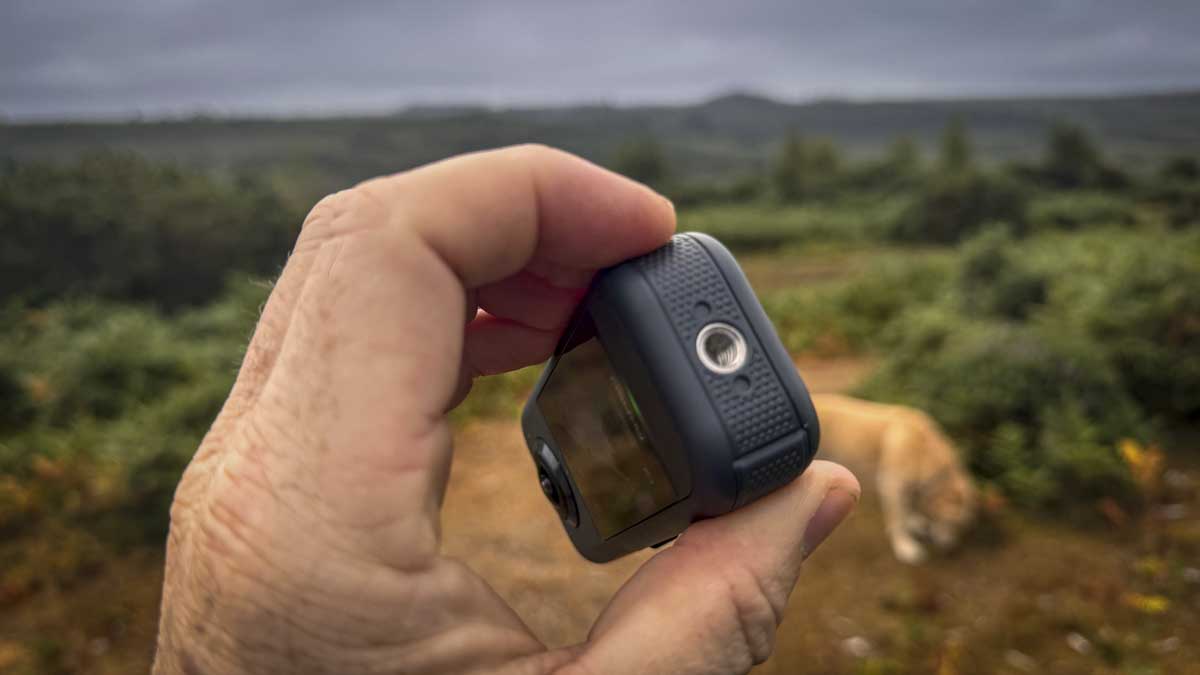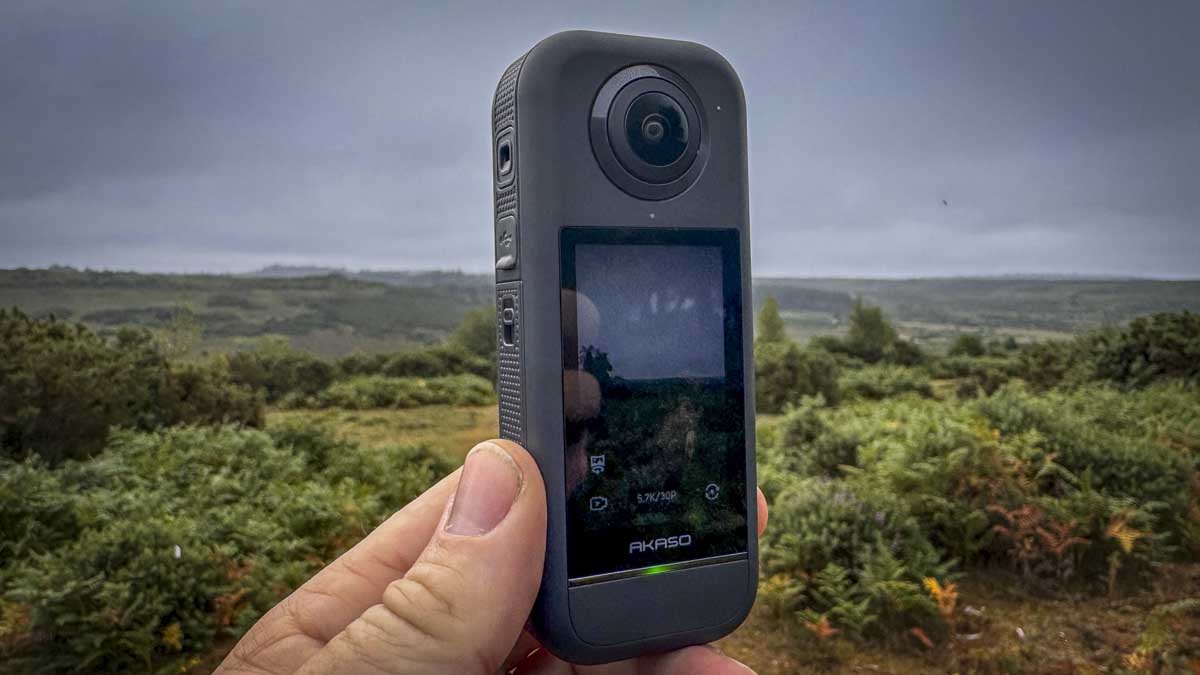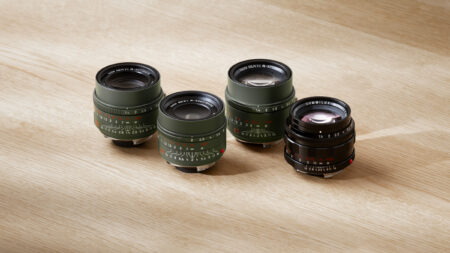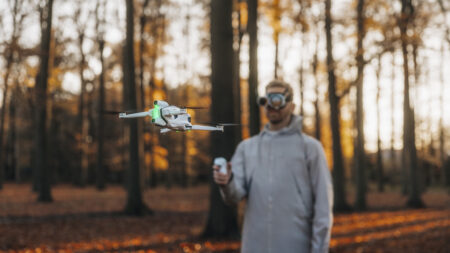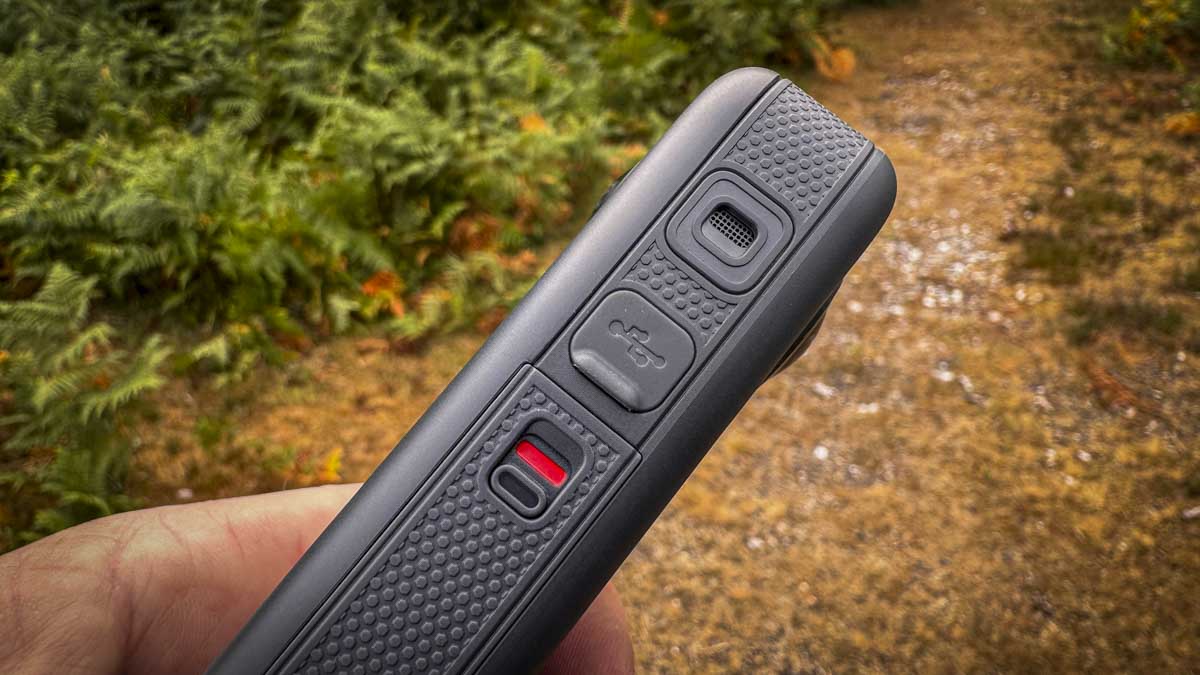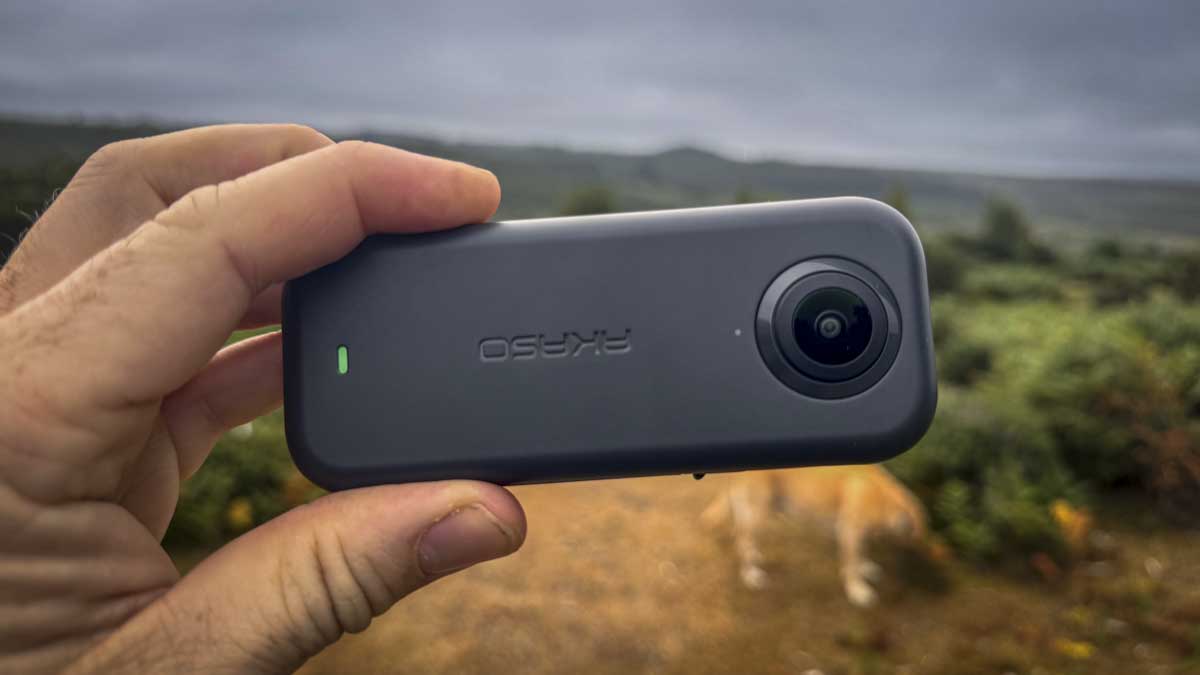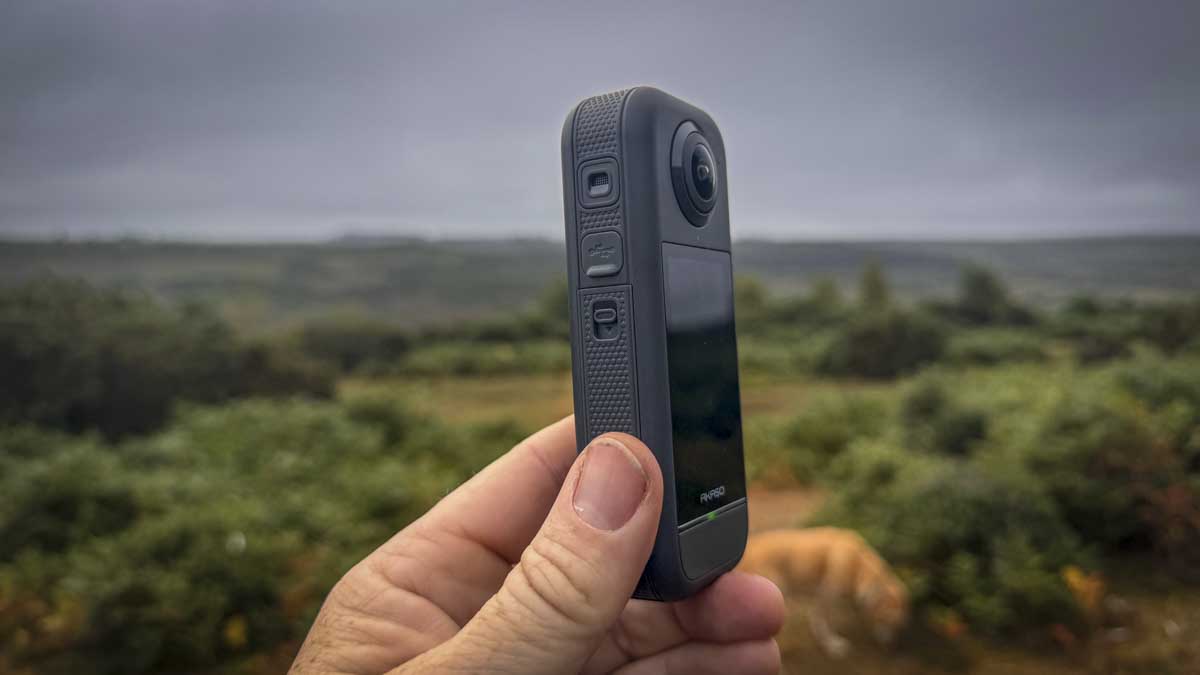Getting started with the Akaso 360 is quick and easy. Pull aside the rubber flap that covers the USB-C port and plug it in to charge. Once the battery has reached capacity, pop in a microSD card and power on with the button on the right-hand side of the camera body. Then swipe down on the touchscreen, tap the settings button, and scroll down to format to ensure the card is ready for use.
To select the resolution, just swipe up, and you have options from 4K at 24 frames per second to 5.7K at 30 frames per second. Tapping back down on the screen takes you to the main screen. On the actual touchscreen, you have a few direct control options, including switching from timelapse to loop recording, photo, DNG8 AEB, interval shooting, and time fusion. What’s surprising for an entry-level camera is that you can also take full manual control.
If you swipe left, it takes you to advanced exposure settings, where you can choose auto or manual and adjust the shutter speed, ISO, and white balance. These options could be useful when you need to take a little more control over the camera or fix the exposure to avoid too much variation in brightness and darkness.
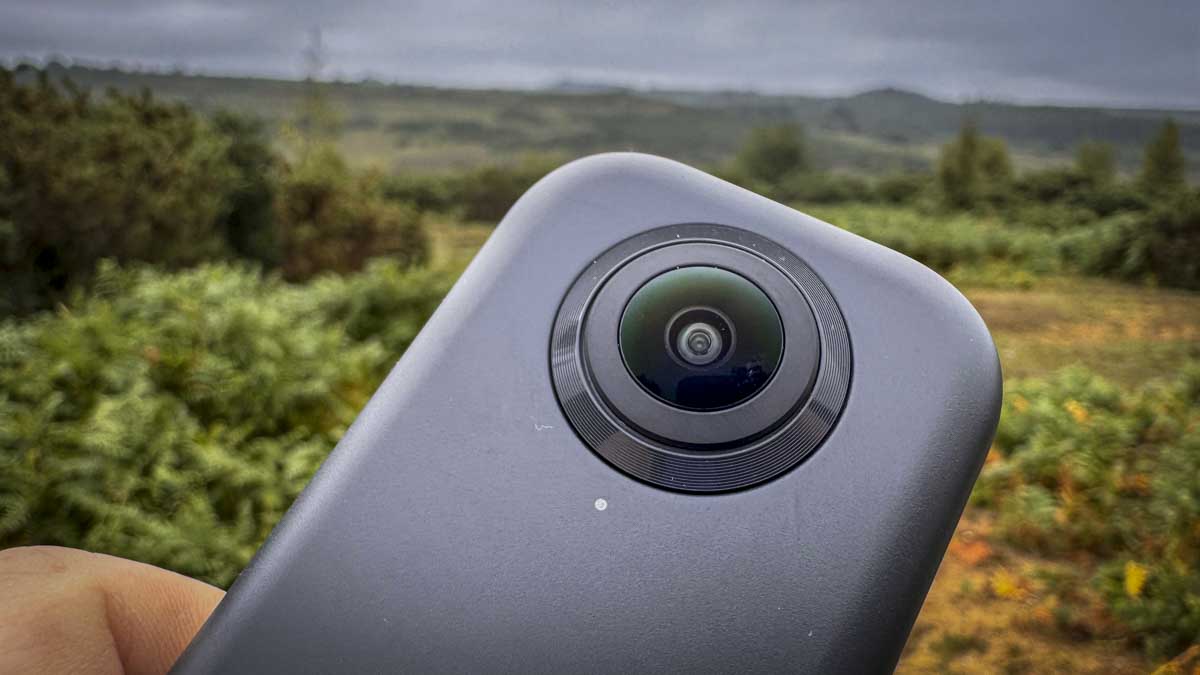
When it comes to the responsiveness of the touchscreen navigating through the options by swiping across the screen and selecting static options works really well. However, when it comes to swiping to change the resolution or manual settings, the touchscreen becomes a little less responsive, which as I previously stated can get annoying.
Starting recording is done by pushing the large button just underneath the touchscreen. It’s not labelled, but once you know it, it’s obvious and well integrated into the aesthetics of the body. To let you know when it’s recording, there’s an LED light just above which glows green when it’s ready, and once you start recording, it turns to a flashing blue LED, so you always know the status of the camera. This light is reflected on both sides of the body. There’s also a small audio alert to let you know when it starts and stops recording.
Overall, in bright conditions (which we’re lucky to have at the moment in the British summer), the quality of the video is pretty good. However, as soon as you go into low light, for instance, through woodlands, you can really see it start to struggle, and images become quite pixelated.
Once your video is captured, you can then take it into the Akaso app on your mobile phone or onto your desktop PC. What’s surprising here is that in both situations, the app and the software are exceptional: easy to use, intuitive and, more than anything, fun with plenty of options throughout.
There’s also very good compatibility, so it’ll work on iOS, Android, Mac and PC. However, I found that some options, such as Little Planet, aren’t available on the Mac, whereas they are on the PC software, so that’s something to keep in mind.
Through the software, you can quickly apply a range of stabilisation and horizon-level edits, and it does this with relatively good speed. Above all, the reliability and quality of the results within the application are generally good, although if you zoom in, you can start to see some of the grain in the image.
Exporting gives you a media file that you can then upload to YouTube or whichever destination you like. Unlike some of the other manufacturers, it doesn’t have its own dedicated video platform, but you can upload these files directly to YouTube, and they work perfectly well, although there was a slight downgrade in quality, which I also noted with other 360 cameras.
Battery life is good. The two included batteries each last about 60 minutes of recording. While this is relatively decent and you do get two hours, it would be nice if this time could be extended a little more.
Ultimately, considering the price and the fact that this is an entry-level 360 camera, it gives you everything you could want. While it may struggle in low light, the decent quality in bright sunlight, the invisible pole mode, Little Planet mode, and the intuitive software make it an appealing choice for newcomers to 360 cameras.
